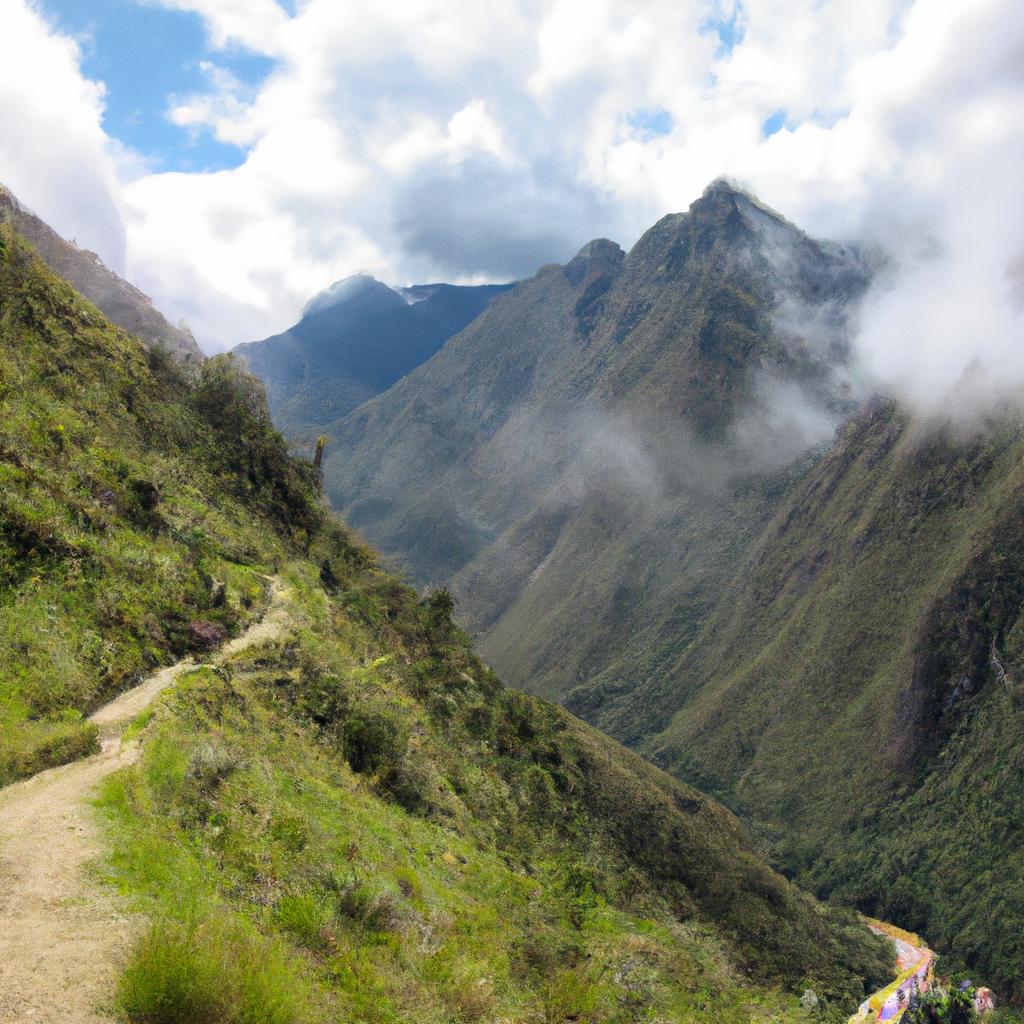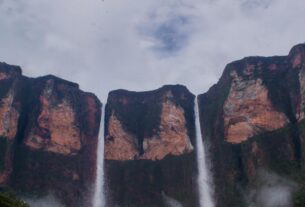If you’re an adventurer and history enthusiast, there’s a place that should be on your bucket list: the Inca Trail in Peru. This iconic trail is not just a hike; it’s a 26-mile journey that takes you through breathtaking landscapes, ancient ruins, and the heart of the Inca civilization. Beginning at the Sacred Valley’s Urubamba River and ending at the mesmerizing Machu Picchu, a UNESCO World Heritage Site, the Inca Trail promises an experience like no other.
A Glimpse into the Inca Civilization’s History
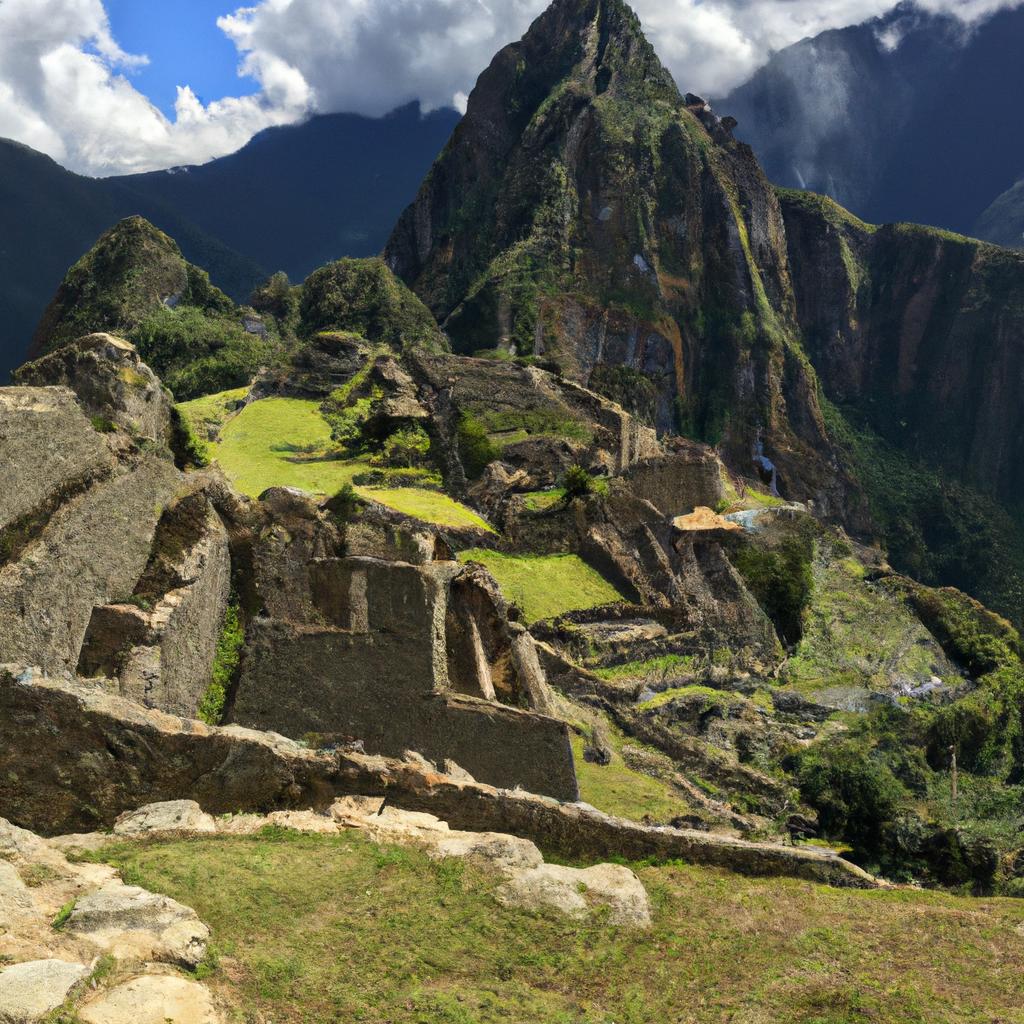
The Inca Trail, built over 500 years ago, served as a vital transportation route within the Inca Empire. In addition, it was the path of religious pilgrimages to the sacred site of Machu Picchu. Although forgotten for centuries, the trail was rediscovered in the 20th century and has since become a popular tourist destination.
Walking along the Inca Trail is like stepping back in time. Ancient ruins such as Runkurakay, Sayacmarca, Phuyupatamarca, and Wiñay Wayna dot the trail. These ruins, once administrative centers, temples, and military outposts, showcase the architectural and engineering prowess of the Inca civilization. They offer a glimpse into the sophisticated social organization of this ancient civilization.
A Spiritual and Physical Journey
The Inca Trail is not just a physical adventure; it’s a spiritual one as well. Following the footsteps of the Incas and immersing yourself in Andean culture is a humbling experience that deepens your appreciation for the past and present of Peru.
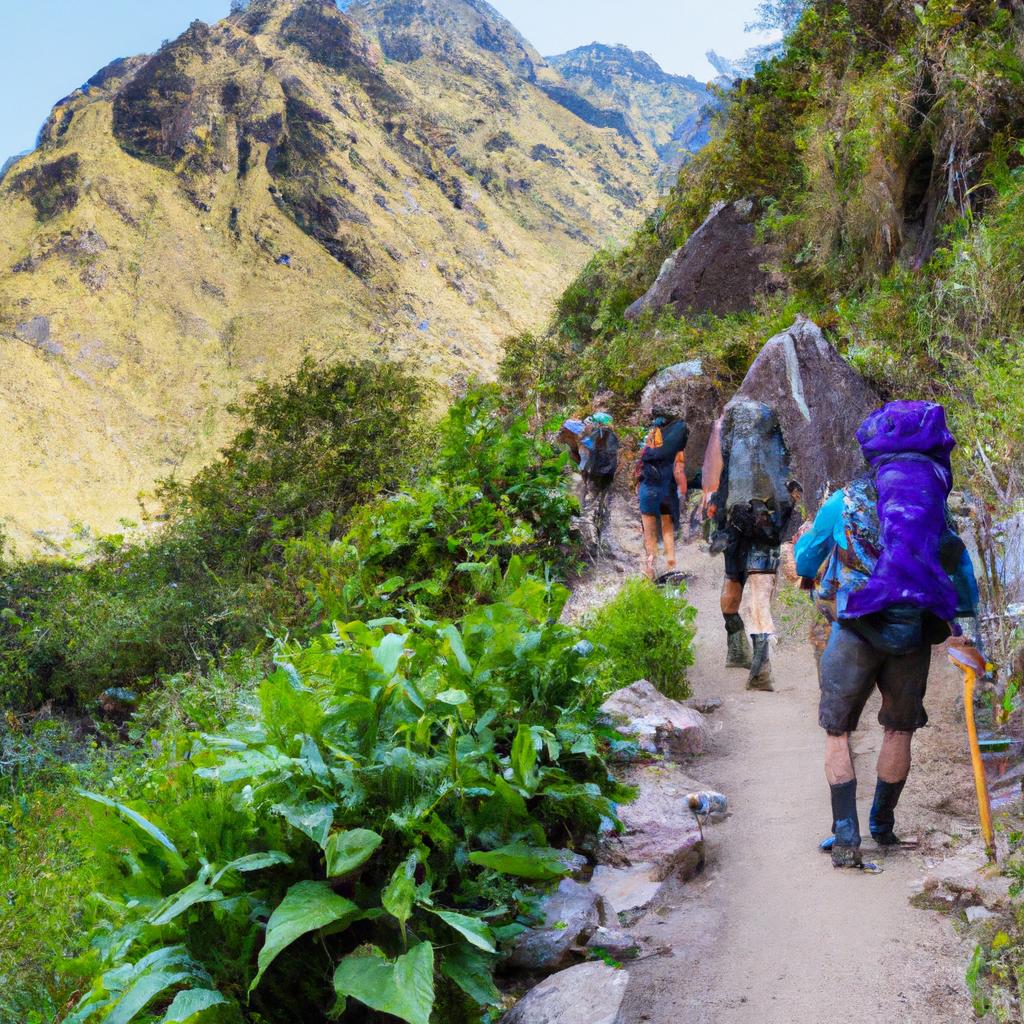
This four-day trek covers 26 miles of stunning landscapes, from lush cloud forests to the lofty peaks of the Andes. As you traverse the trail, you’ll face challenging ascents and descents, high altitudes, and unpredictable weather. But fear not, the rewards are worth the effort. Imagine the view of snow-capped mountains, witnessing the sunrise over Machu Picchu, and the overwhelming sense of accomplishment. These moments will stay etched in your memory forever.
The Classic Route: A Journey to Machu Picchu
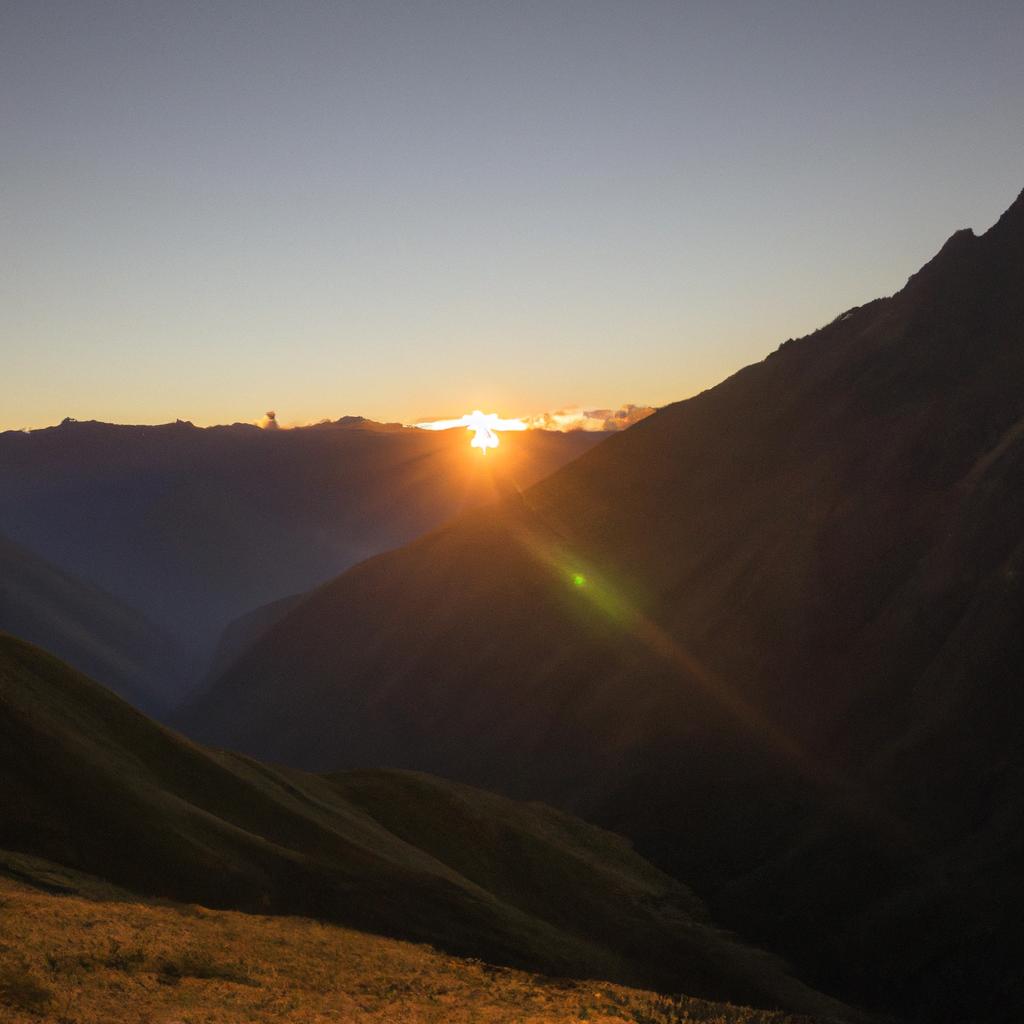
The classic route of the Inca Trail is the most popular and takes four days to complete. Starting at the kilometer 82 checkpoint, the trail follows the Urubamba River before ascending to the highest point of the trail, Warmiwañusca (Dead Woman’s Pass), at 4,215 meters above sea level. The trail then descends to the ruins of Runkurakay, Sayacmarca, and Phuyupatamarca before reaching the final campsite at Wiñay Wayna. On the last day, you’ll wake up early to reach the Sun Gate, Inti Punku, before sunrise for a breathtaking view of Machu Picchu.
As the classic route is limited to 500 people per day, including guides, porters, and tourists, it’s crucial to book in advance to secure your spot.
The Alternative Routes: Off the Beaten Path
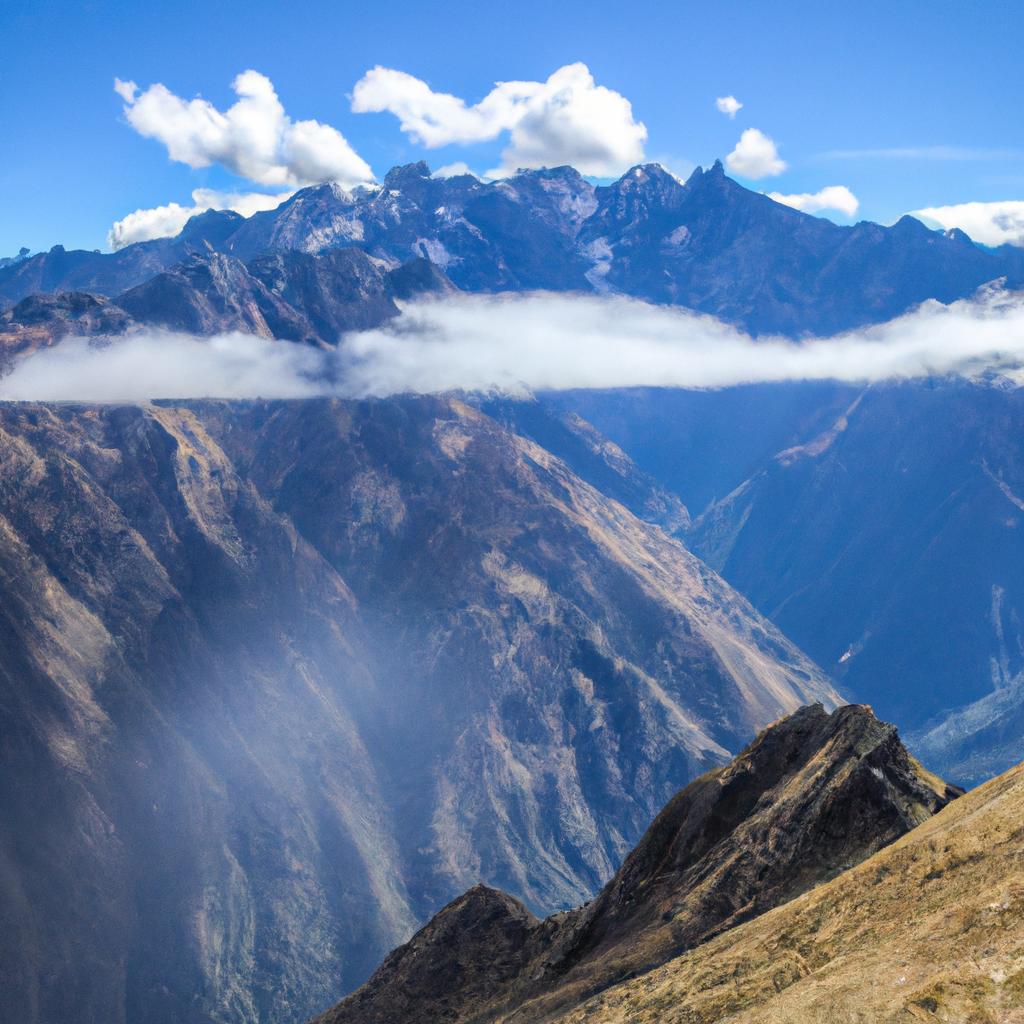
If you prefer a less crowded and more challenging adventure, consider the alternative routes to the classic Inca Trail. The Salkantay Trek, Lares Trek, and Choquequirao Trek offer unique experiences as they take you through remote Andean villages, awe-inspiring landscapes, and ancient ruins.
The Salkantay Trek, spanning five days, leads you through the Salkantay mountain range, where you’ll encounter snow-capped mountains, turquoise lakes, and the impressive Salkantay glacier. The Lares Trek, a four-day adventure, offers a glimpse into the Andean culture and lifestyle as it takes you through the remote Lares Valley. Finally, the six-day Choquequirao Trek brings you to the lesser-known but equally captivating ruins of Choquequirao, rivaling Machu Picchu in beauty and history.
Preparing for the Inca Trail
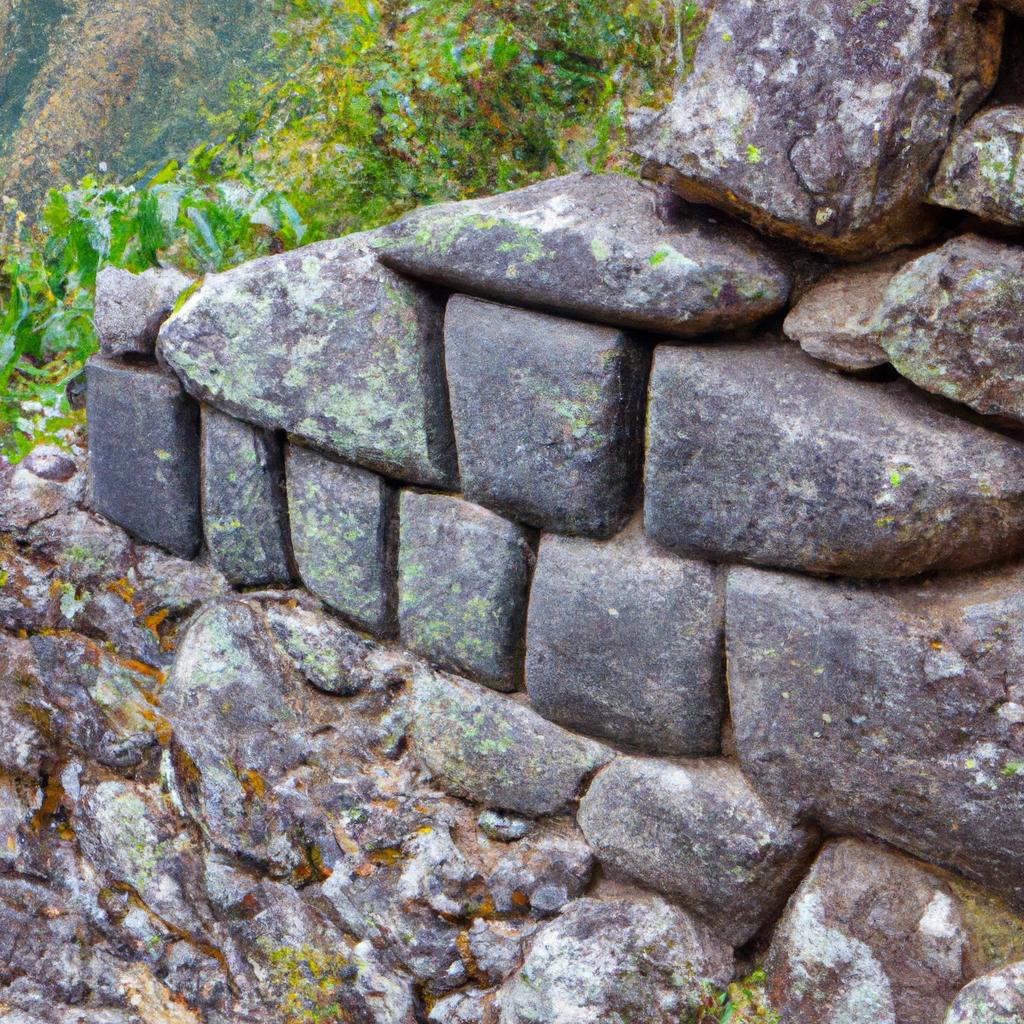
Before embarking on the Inca Trail, proper preparation is essential. The trail’s high altitude, steep terrain, and unpredictable weather can be challenging, but with the right approach, anyone can complete it. Here are some tips to help you prepare:
- Physical fitness: Train for at least two months before the trek, focusing on cardiovascular endurance, leg strength, and core stability. Acclimate to the high altitude by spending a few days in Cusco before starting the trail.
- Mental preparation: Maintain a positive mindset, take breaks when needed, and stay hydrated and nourished.
- Proper gear: Pack essentials such as a comfortable backpack, hiking boots, waterproof clothing, a sleeping bag, a headlamp, and a refillable water bottle. Carry some cash for snacks and souvenirs.
Tips for a Safe and Enjoyable Trek

Hiking the Inca Trail is an unforgettable experience, but it’s essential to prioritize safety and responsible trekking. Here are some tips:
- Follow trail regulations: Respect the environment, stay on the designated trail, and avoid littering.
- Hire a licensed guide: A guide ensures your safety, provides historical and cultural insights, and offers assistance throughout the journey.
- Pace yourself: The Inca Trail is not a race; listen to your body, take breaks, and enjoy the experience.
- Stay hydrated and nourished: Drink plenty of water and bring energy-rich snacks.
- Respect the environment and culture: Do not disturb any artifacts or wildlife, and show reverence for this sacred site.
In conclusion, hiking the Inca Trail is an extraordinary adventure that combines history, culture, and nature. It’s an opportunity to connect with Peru’s rich past while marveling at its beautiful landscapes. Plan your trip with TooLacks and embark on a journey you’ll cherish forever.
